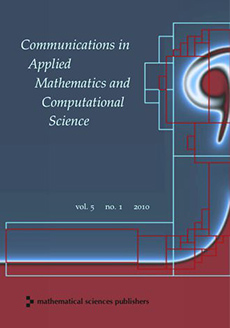Abstract
We compare two approaches to the predictive modeling of dynamical systems from partial observations at discrete times. The first is continuous in time, where one uses data to infer a model in the form of stochastic differential equations, which are then discretized for numerical solution. The second is discrete in time, where one directly infers a discrete-time model in the form of a nonlinear autoregression moving average model. The comparison is performed in a special case where the observations are known to have been obtained from a hypoelliptic stochastic differential equation. We show that the discrete-time approach has better predictive skills, especially when the data are relatively sparse in time. We discuss open questions as well as the broader significance of the results.
Citation
Fei Lu. Kevin Lin. Alexandre Chorin. "Comparison of continuous and discrete-time data-based modeling for hypoelliptic systems." Commun. Appl. Math. Comput. Sci. 11 (2) 187 - 216, 2016. https://doi.org/10.2140/camcos.2016.11.187
Information





